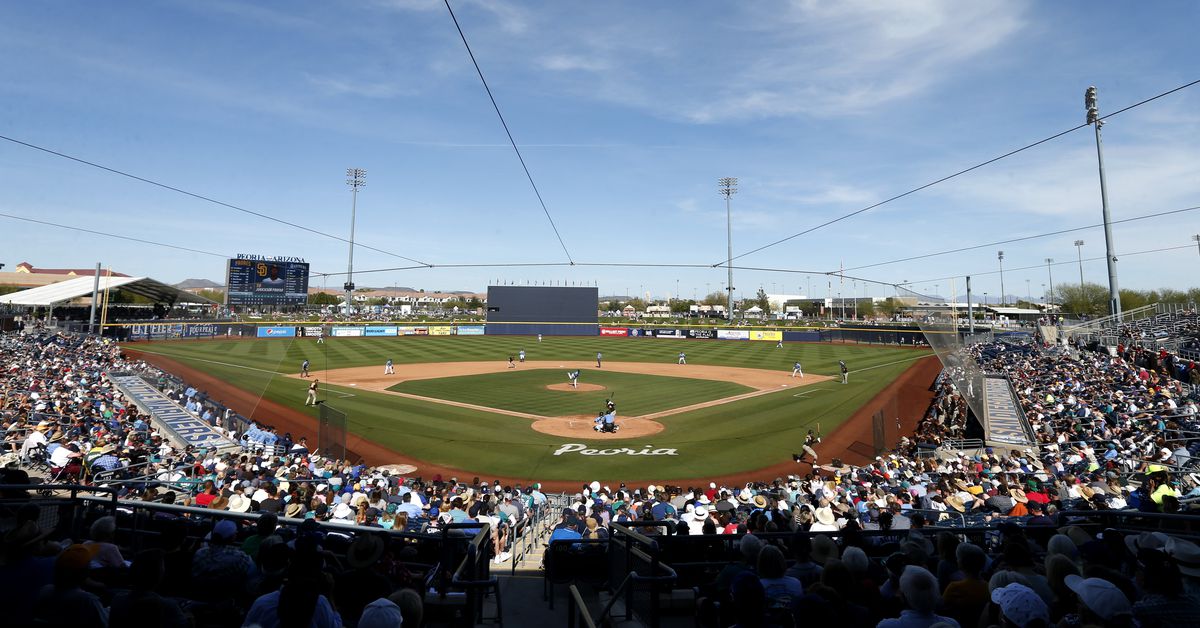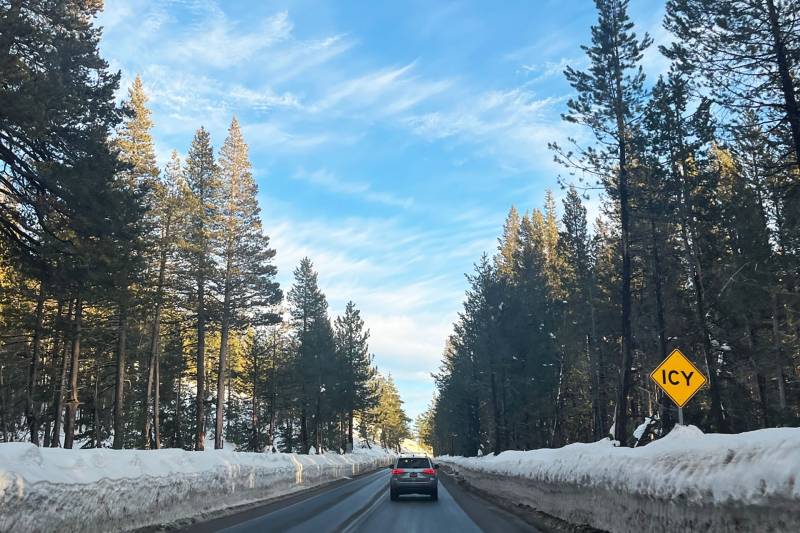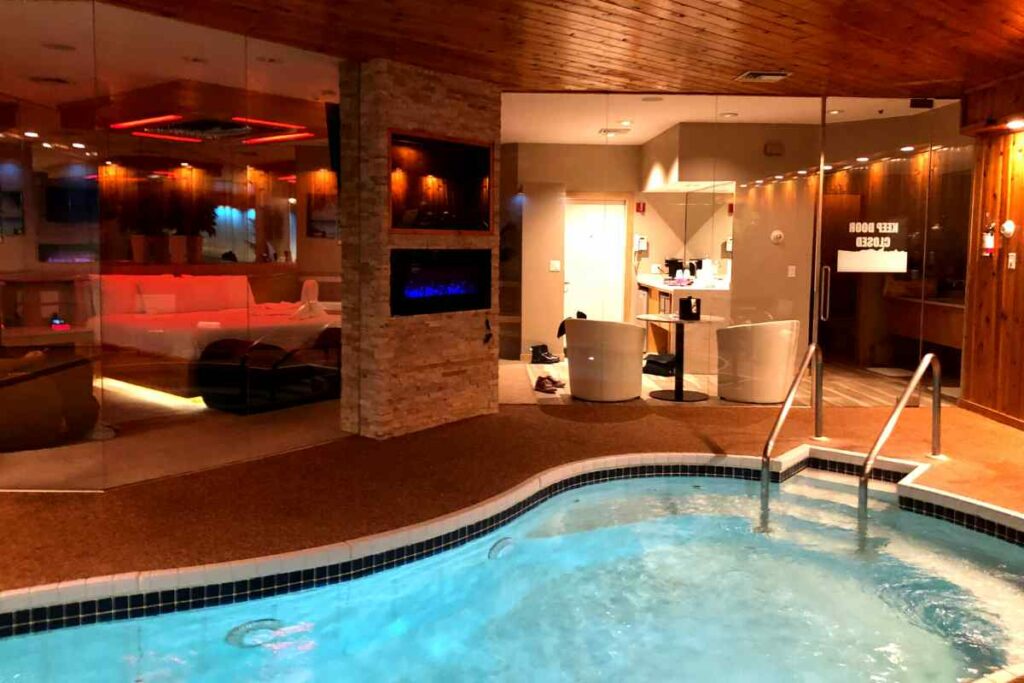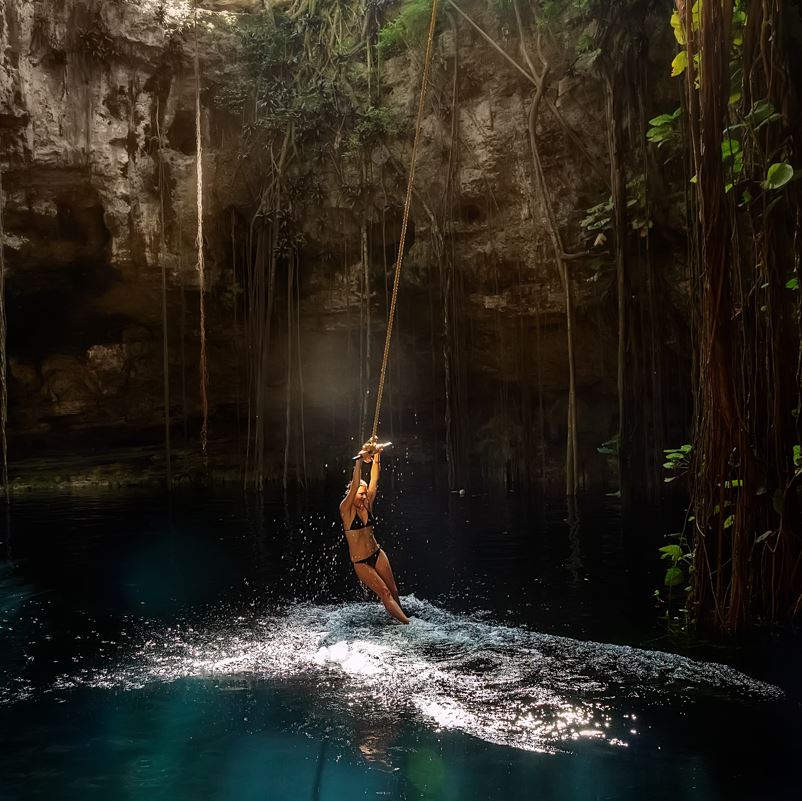
If you’re interested in heading to Spring Training this year and haven’t yet started planning your trip, take this article as your sign to start, as things tend to fill up quickly. If you’ve never been to Spring Training, it’s a trip worth taking if you can swing it, but can definitely feel overwhelming (and expensive!) to navigate if you’ve never been before. Here are some tips and tricks the LL staff has accumulated over our years of visiting the Phoenix area that we hope will be helpful to you. First tip: even if you don’t usually read comments on the articles, make sure to read them on this one, as people will weigh in with their own tips and favorites, including our desert-based contingent of Mariner fans.
Getting there:
Flights are not as inexpensive as they’ve been in the past, but they still remain one of the easiest parts of your Spring Training adventure to secure if you’re flying out of the Seattle area. Seattle to Phoenix is a popular route serviced well by both Alaska and Southwest with many flights to choose from per day. Consider combining airlines with two one-way tickets, which in some cases can be cheaper than one round-trip ticket. For the best prices, try to book at least four weeks in advance. If you can swing it with your schedule, flying mid-week, like on a Wednesday, is generally less expensive than flying on a weekend or a Monday.
As for when to travel, take a gander at the Mariners Spring Training schedule and try to target dates that don’t involve too many off-days. If you’re planning on staying around the Peoria Sports Complex (PSC), try to choose a week heavy on the home games (remember “away” games for the Mariners against the Padres are still held at PSC). Some games are easier to secure tickets for than others: Giants, Dodgers, and Cubs games are always big sellers and will sell out, especially at their home stadiums. Also, this year be aware that the World Baseball Classic is happening in Phoenix starting March 11 and running through March 15, which will affect both plane tickets and accommodation prices and availability.
Getting around:
Unfortunately, Phoenix’s public transportation system leaves a lot to be desired. There is a light rail, but it essentially runs between the ASU campus and downtown, with a stopoff at the airport. If you’re staying in Tempe, east Mesa, or west Phoenix, it could be useful to you if you’re not planning to visit PSC much or at all. Otherwise, you’re left with managing the bus system. There is now an app for Valley Metro, which is one apparent improvement over years past; if you have success with learning how to ride around on the bus, by all means, please enlighten us as to your sorcery.
Otherwise, you’re left with the option of renting a car, or taking rideshare services. Renting a car can be wildly expensive; consider carshare options like Turo or Getaround; or, if you only need the car for a day, Zipcar. If you plan on traveling around the valley to see different games or your accommodations are far from PSC, you’ll probably need to rent a car. If you’re staying close to PSC and plan on mostly hanging out around there, you can probably do without.
Be aware that Phoenix is a car city, and not designed to be particularly walkable. If you’re walking, take care crossing busy intersections, especially if you have small children or mobility concerns in your group. If you’re driving, read this post to get a tongue-in-cheek idea of how driving in Phoenix works. Generally, roads are busy, crowded, and people drive quickly, on and off the highway. Rush hour traffic in Phoenix can be rough and starts relatively early in the day (think 3 PM or even earlier); allow extra time when you’re crossing the valley or have to be on I-10 for any amount of time as a general rule.
Accommodations:
If you have a friend or family who live in the Phoenix area, 1) be very nice to them and 2) can we be friends too? The hotels around PSC book up quickly and can be quite pricy, but have the benefit of being within walking distance of the complex. The La Quinta on 83rd is a stone’s throw from the complex, but the Hampton Inn, Residence Inn, Comfort Suites, and Holiday Inn are also right nearby. Spring Hill Suites and the Quality Inn are a little further but still well within walking distance. This is a good time to cash in those hotel rewards, if you’ve got them. Downtown Phoenix will have a larger number of hotels at better rates, but be aware that Phoenix to PSC is a solid half an hour drive, more in traffic. Similarly, Scottsdale has plenty of resorts and is close to Salt River Fields, home base of the Diamondbacks and Rockies, but is about a 45-minute drive to PSC. There are lots of options for Airbnb, although they’re best for groups of four or smaller; Vrbo is good if you have a bigger group. Homestay is another alternative to Airbnb, although with less inventory, and again, better for a smaller group.
The games:
Familiarize yourself with where the stadiums are located; this will help in planning your trip.
:no_upscale()/cdn.vox-cdn.com/uploads/chorus_asset/file/24330642/Cactus_League_MAP.jpg)
There are two complexes close to the one the Mariners and Padres share: Surprise Stadium in Surprise, home of the Rangers and Royals; and Camelback Ranch in Glendale, home of the Dodgers and White Sox. Both are about a 15-20 minute drive from PSC. The next closest stadium is American Family Fields, home of the Brewers, a 20-25 minute drive away in Maryvale, in Northwest Phoenix. Goodyear Ballpark, home to the Reds and Guardians, is also in the West Valley, and about a 25-30 minute drive depending on traffic.
The other stadiums are kind of a haul to get to if you’re starting from Peoria. Tempe Diablo (Angels) in Tempe, Sloan Park (Cubs) in Mesa, and Hohokam Stadium (A’s) are all 35-40 minute drives. Scottsdale Stadium (Giants) and Salt River Fields (Diamondbacks, Rockies) are both in Scottsdale, but at completely different ends of the city; both will take about 45 minutes to get to from Peoria. Parking at most of the stadiums is plentiful, but will cost you an average of $10; check in with each stadium’s website for further instructions as well as a list of what is and isn’t allowed into stadiums (most won’t allow any kind of metal, including spray sunscreens and Hydro Flasks or similar waterbottles; some won’t allow waterbottles, period). The exception to the parking rule is Scottsdale Stadium, which is located downtown; there is a garage next to the stadium but it fills up early, so allow extra time to search out parking if you’re attending a game there. If you want to get around paying to park, showing up early before the parking attendants are out is a good strategy if you don’t mind killing some time. I’ll often park at the PSC for free to watch practice, wander over to the taco shop, and then wander back for the game.
As for getting tickets, buying online in advance is recommended. For games against the Cubs, Giants, and Dodgers, it’s basically required as those will sell out. Be aware that very few of the stadiums have adequate sun cover and the seats that are covered go quickly. Bring a hat and sunscreen. Camelback—nicknamed “Melanoma Park” by scouts—is especially notorious (on the flip side, Salt River Fields has generous shade cover and is a good choice for the sun sensitive). Also if you’re sitting on the bleachers during a day game, bring something to put down. The backs of your legs will thank you.
If you’re an autograph hound, you can try to catch the players on road games, where there will be less competition. Sometimes you can catch a player on the way out from a game but remember that you’re the thing standing between this person and a cool shower, and act accordingly. You’ll have more success trying to catch a player coming off the practice fields for the day, but the same “cool shower” rule applies. Be polite, gracious, and brief, and always thank the player for their time. Make sure you have your own sharpie (pack backups). If a player brushes you off, try not to take it personally. Remember, players are technically at work when they’re getting asked for autographs, and might have other things on their minds. Also, professional autograph seekers hound these players every day, at all hours of the day, to get the players to do something for free that they will later attempt to make money on. Remember that players are humans, and be a human in interacting with them.
Minor league players are relatively easy to track down if you position yourself around the walkway between the clubhouse and the backfields; don’t bother them on their way to the fields, but wait until they’re done with their workout. Generally, minor leaguers are happy to sign and chat with you provided you know their names. Do some research on MiLB.com and look up headshots and double check jerseys.
Kids to the front of any and all autograph lines, every time. If you are with a young enthusiastic autograph collector getting signings indiscriminately, make sure to take a second to jot the player’s name down next to their signature (or put a piece of painter’s tape on a signed ball) so you don’t have to spend hours squinting at indecipherable signatures. You could also set up a scrapbook with a page devoted to each player before heading down to spring training for easy on-the-go reference.
Here’s the rough layout of the PSC. If the chain link fence (the blue diamond by the fields) is open, practice is likely in session or about to be. The Mariners major-leaguers practice on field M1, primarily, and some players are occasionally on M2. You can catch players on the walkway outside those fields headed back to the clubhouse. Minor leaguers practice on the backfields, M3-M6. There are covered areas to watch practice at each of the fields. The concession stand, when it’s open, has light snacks and drinks, but don’t depend on it (you can bring your own snacks and drinks). There’s also a public restroom on the property. If you want a practice schedule, often Ryan Divish or Shannon Drayer will tweet out a general schedule, or you can visit the Mariners administrative office (located at, confusingly, the box marked “Mariners clubhouse” on the map) and ask for a copy of the practice schedule. (Take a picture on your phone and then you won’t have to worry about losing it.)
:no_upscale()/cdn.vox-cdn.com/uploads/chorus_asset/file/24330887/Screen_Shot_2023_01_01_at_10.12.23_PM.png)
Source: Peoria Sports Complex Website
Other things to do:
You’re going to Spring Training to see baseball, but there will be a point at which at least some members of your group are baseball-ed out. Luckily Phoenix understands Sports Fatigue and has a host of places to go.
Activities:
The leisure activity of choice for Mariners players confined to the desert is TopGolf, which has locations in Glendale and Scottsdale. Book early or go on off-hours; it gets busy. If you have kids with you, you’ll be bored of the Legoland Discovery Center in Tempe way before they will, but just in case, there’s also an aquarium experience right across the mall. If you’re in Tempe, the zoo is a popular destination, as is scrambling up the rocks at nearby Papago Park. Also in that area, plant-lovers or those seeking a peaceful timeout will enjoy the Desert Botanical Garden. If you’re at Salt River, Mavrix is like a less-headache-inducing Dave and Buster’s, and they have bowling and laser tag. Octane Raceway is in the same complex if go-karts are more your thing. In Scottsdale, train lovers can check out McCormick-Stillman Railroad Park, where there’s also a Western-themed play structure and a carousel. Closer to Peoria, Castles and Coasters is about a 15-minute drive and is like stepping back in time to the early 90s; there’s mini-golf, an arcade, bumper boats, and a small amusement park. It honestly slaps.
Shopping:
Downtown Scottsdale has a great many higher-end boutiques as well as an upscale mall, Fashion Square. It’s also home to a Baseballism store, so worth making a trip for that at least. If your vibe is more funky-retro, check out the Melrose District in Phoenix, which has great vintage shops that specialize in the midcentury modern aesthetic. If you want the retro without the funk, check out downtown’s Newton Center for more midcentury modern goodness, and take a drive around to gape at some of the area’s best midcentury classic homes on and around Camelback Road. Also in downtown Phoenix, Bee’s Knees is a vintage clothing store that also features work from Arizona artists; it’s located in a complex called the Hive that is a small collection of indie shops. If you love vintage clothing shops, downtown Phoenix has a clutch of them in Midtown, around the Children’s Hospital. Unsurprisingly, you can find great deals in Phoenix on beautiful vintage winter coats. Tempe, as a college town, has a fun downtown area that’s very walkable, with tons of shops and restaurants along Mill Avenue (check out Snakes and Lattes, a board game café with an enormous library of games).
Food and drink:
If you’re staying near PSC without a car, know your dining options will likely be limited to Peoria’s seemingly never-ending stretch of chain restaurants. Revolu Taqueria is steps away from the complex and has a nice happy hour and $3 Taco Tuesdays. Barrio Queen, a three-minute drive or twenty-minute walk over on Bell Road, has an elegant, extensive menu. Tacos Calafia serves up authentic Tijuana-style street tacos and is a short drive from the complex right down 83rd; it’s inexpensive and delicious, and will provide the best bang for your buck closest to PSC. There’s also a Raising Cane’s right by the complex, which is honestly more delicious than fast food chicken fingers have any right to be.
American Family Fields in Maryvale is the closest complex to downtown Phoenix, where you’ll have all kinds of options. Tacos Huicho has the best al pastor possibly in the world; get more than you think you’ll eat to takeaway (you’ll eat them all) and head over to Wren House Brewing, which has a sweet patio and a wide variety of house made beers, all of which are very good. Have an elegant meal at Restaurant Progress in Melrose or visit the barcade The Thunderbird next door. Downtown Phoenix also boasts a pair of community-focused restaurant collectives: The Pemberton hosts food trucks and live music in a converted 1920s home, and The Churchill is a group of converted shipping containers serving up food and drinks around a central patio.
If you’re headed to Goodyear for a game, stop off at Saddle Mountain Brewing Company, which has hearty pub fare and a lively selection of beers brewed in-house. Just be aware that they, like the rest of Goodyear, roll up the sidewalks pretty early: promptly at 10 PM Sun-Thurs, so if you’re attending a night game, eat beforehand.
Scottsdale will provide a wide variety of dining options; kids and grown folks alike will enjoy Lo-Lo’s Chicken and Waffles, which is walking distance from Scottsdale Stadium. Craft 64 is a five-minute drive and features a wide selection of local Arizona beers and innovative pizza for when you can’t make it into Jerry Dipoto’s favorite, Pizzeria Bianco. If you’re headed to the other side of Scottsdale to Salt River, take some extra time to go to Mambo’s Dominican Kitchen in Chandler—the walls are adorned with pictures of Dominican-born baseball greats, and the friendly owners delight in recounting the amount of food an average table of baseball players puts away (you might even see some there!). (Bear in mind that Mambo’s is closed on Mondays.)
General tips:
- It gets cold in the desert when the sun goes down. Bring a sweatshirt for night games, and wear pants. Pack a variety of clothes; just because it’s Arizona doesn’t mean you’re going to be baking in the sun the whole time, especially if you’re there earlier in the month.
- For a native Northwesterner, the water directly from the tap in Phoenix tastes like licking a lightbulb that’s been dragged through gravel. It’s awful. Get one of those waterbottles with a built-in filter or resign yourself to buying bottled water everywhere. Do not use any of this as an excuse not to drink water. Start your day by drinking a full bottle of water and top up throughout the day.
- If you’re driving, be aware that Maricopa County patrols vigilantly for driving under the influence, especially at times when there is a large influx of vacationers to the Valley. Be mindful of the role dehydration can play in alcohol consumption.
- Sunscreen. Get a bottle for the room, a pocket sized bottle for yourself or your purse, a big bottle for the car, and reapply frequently. Set a timer on your phone to help you remember to reapply. Nothing ruins a trip like getting burnt on Day 1 and suffering the rest of the time.
- If you’re at Spring Training for more than a couple days, plan a trip to a nearby Sprout’s Market and stock up on granola and snacks from their bulk bins, as well as a couple little snacky protein platters to keep in the room refrigerator for when you’re feeling peckish.
Got your own tips and tricks to life in the Valley or Spring Training in general? Drop a note in the comments below!





